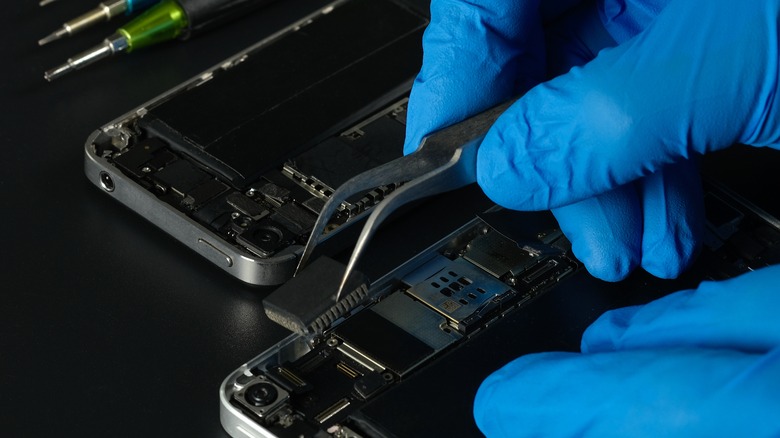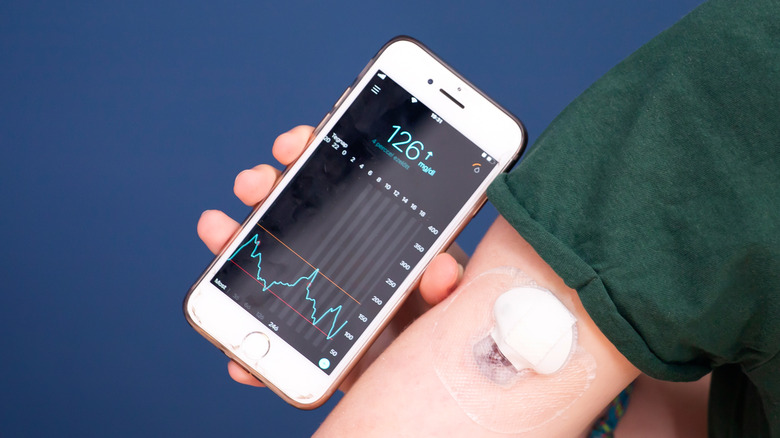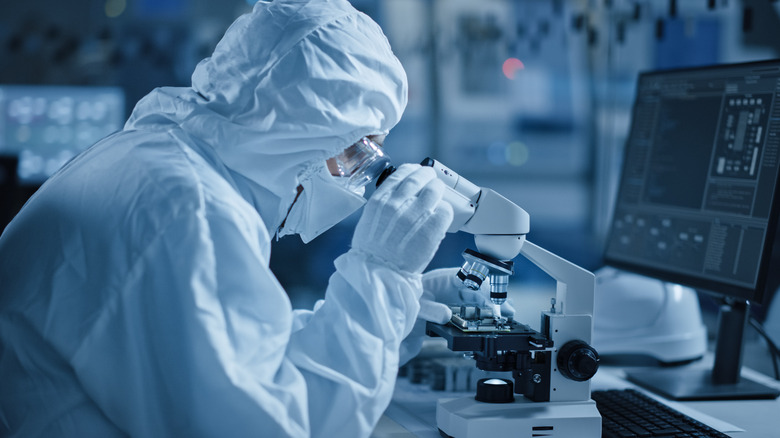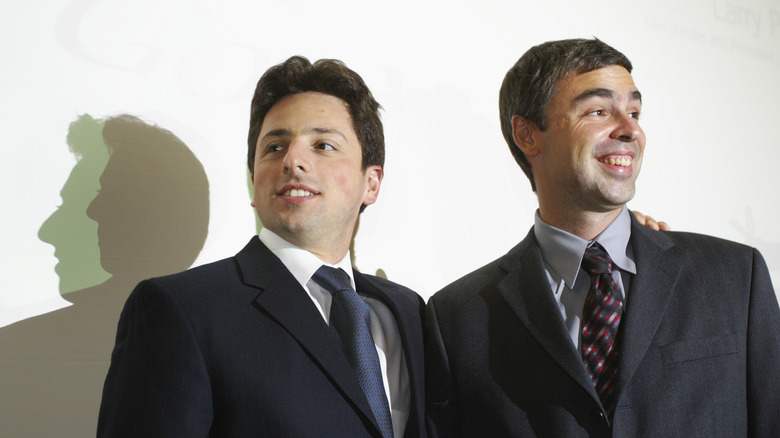Apple's Moonshot Lab Is Its Biggest Secret, But Details Still Just Leaked
According to Merriam-Webster, a "Moonshot" was originally another term for "long shot," something that did not have much chance of paying off. Since then, the term has evolved to cover lofty and ambitious projects, many of which still have a slim chance of going anywhere. Still, the occasional moonshot that lands has such a huge payoff that tech companies dedicate highly funded departments packed with highly talented individuals to them.
Apple is one of those companies, and its moonshot division is called the "Exploratory Design Group," or XDG for short. If you haven't heard of it before, there's a good reason for that. Apple is a highly secretive company, and XDG is a highly secretive department within that highly secretive company, at least according to Bloomberg's Mark Gurman. This is understandable, as the technologies it is researching are potentially game-changing enough to take a huge gamble on. Previous payoffs have reportedly included better battery technology in the iPhone and Apple's in-house low-power processors.
Gurman has helped lift the lid on Apple's most secretive department, its current big project, and some other things it is currently working on. While the exact details are still scarce, this recent leak gives us a good idea of what we might see in Apple hardware sometime down the road.
It is currently focusing on a life-changing health feature
If rumors are to be believed, XDG's current flagship project could be life-changing for missions of people if it pays off. The company is said to be looking into no-prick glucose monitoring technology. This tech could show up in a future generation of the Apple Watch, further expanding the device's already extensive health monitoring features.
Currently, over 34 million people in the United States alone suffer from diabetes. For many people, monitoring their blood glucose levels is an important part of their daily lives. It allows them to keep on top of their condition by reducing symptoms and mitigating the risks of long-term complications. As things stand, blood glucose can be monitored in a few ways. A device can be implanted into a diabetic that continuously monitors blood glucose levels, or the patient can prick their finger and put the resulting drop of blood into a testing device several times a day.
People with continuous glucose monitors still have to jab an appendage to calibrate their devices, they just have to do it far less often. The technology XDG is looking into could spare millions of people the pain and inconvenience that comes with current monitoring methods. Theoretically, it could become one of the most innovative, impactful, and world-changing advancements Apple has ever made.
There is more than one project being researched by the XDG team
While no-prick glucose tracking might be the next truly game-changing project Apple's XDG team is working on, it is far from the only project the department is rumored to be handling. XDG is reportedly split into several different units, each working on its own project. Although some of the company's engineers may be working on more than one project at once, at least according to Gurman, and XDG is its own department, secrecy is still paramount. Employees are reportedly not allowed to discuss the moonshot projects they are working on with anyone outside of other team members working on that project.
Still, vague details about alleged XDG projects are available, with Gurman claiming that the no-prick glucose monitoring tech isn't the only medical project the team is working on. If the leak is accurate, the division is attempting to develop features for Apple's upcoming XR headsets that will be useful to people with eyesight problems. The ongoing AI arms race is another area where XDG is allegedly focusing some of its resources.
Beyond the more outlandish projects, there are also some rumored areas of research that are a bit more predictable. This includes developing the company's low-power processor technology even further, designing better batteries for the iPhone range, and producing next-generation displays. XDG has already seen success in these areas, so has plenty it can build on.
Apple isn't the only company with a moonshot division
Many things go into a world-leading company, but constant advancement and innovation are vital to businesses that want to stay at the top. As a result, Apple is not the only company with a moonshot department. Due to the secrecy that surrounds these departments and the research they are conducting, it's also difficult — if not impossible — to say how many companies have added this extra layer to their research and development wing.
We can say with certainty that one other major company does have a moonshot department. Alphabet, Google's parent company, has openly had "X" for years now. Google's department takes pitches from what it describes as a "diverse range of inventors" and attempts to develop the ones that can make a difference and have a slim chance of working out. So far, it has produced some of the tech used in Google Glass, Waymo self-driving car technology, and Loon internet balloons. None of those really worked out, but that's moonshots for you. Like Apple, Google sees its moonshot division as an important asset.
Following their semi-retirement, the company's co-founders Larry Page and Sergey Brin were almost entirely focused on the moonshot department. Curiously enough, the only thing that dragged them away from their moonshot work in recent times is the ongoing AI arms race Google has embroiled itself in with Microsoft and OpenAI. So while moonshots are all about rolling the dice on outlandish game-changing technology, AI seems to be firmly in the mainstream category at Google.



